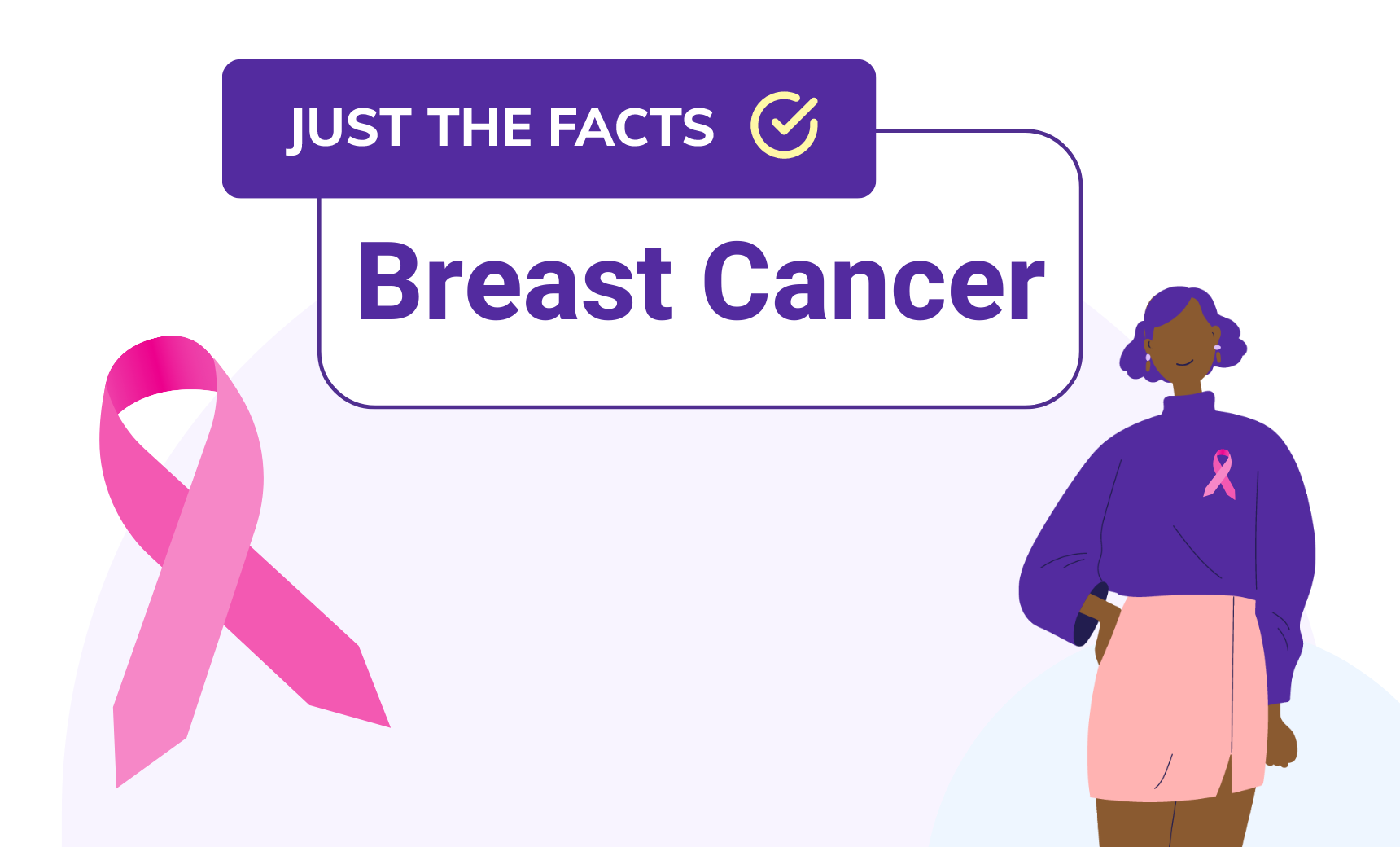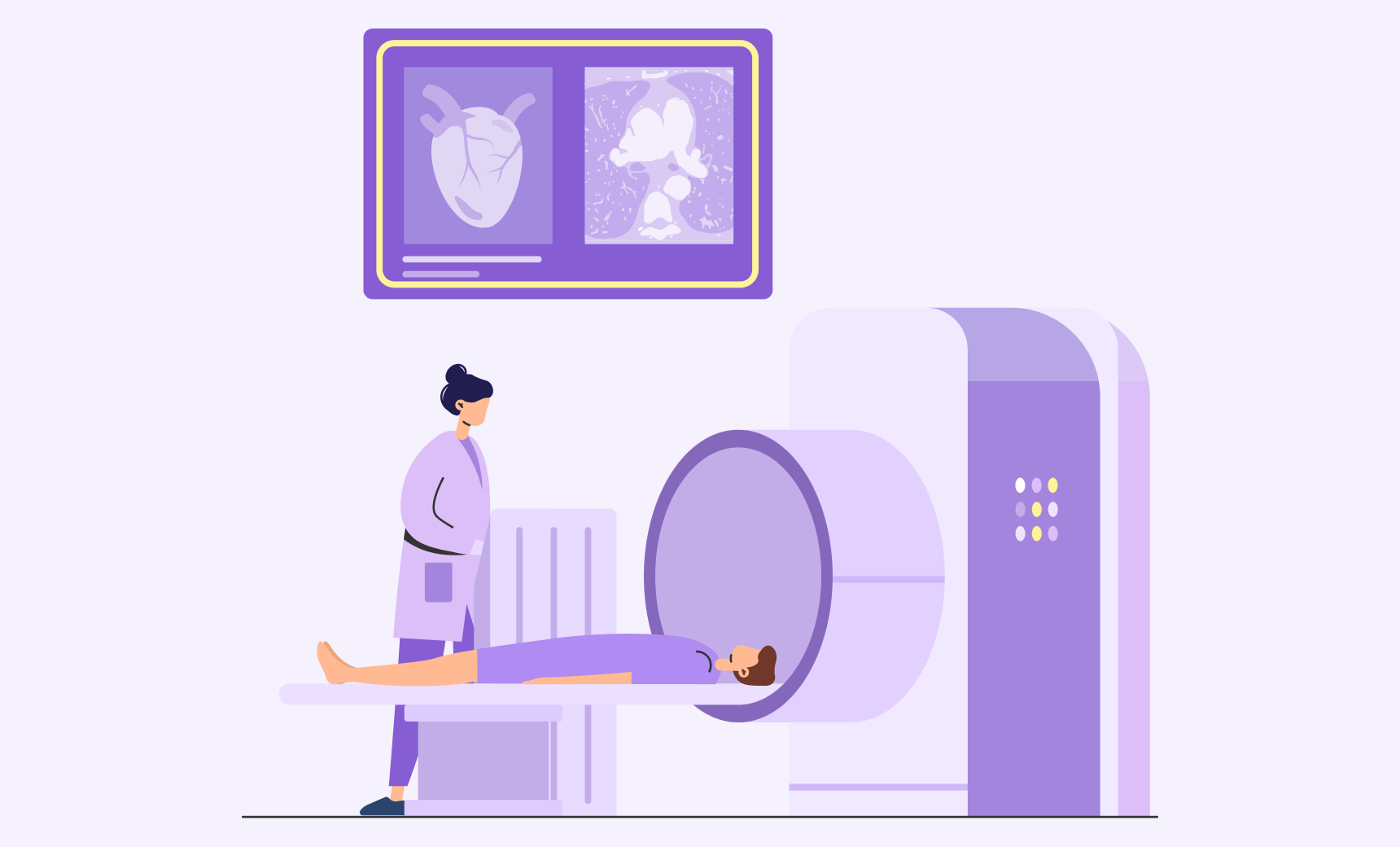
Just the Facts: Breast Cancer
Your guide to breast cancer types, diagnosis, and treatment.
Though October is Breast Cancer Awareness Month, breast health is important all year. Knowing what breast cancer is, how it’s diagnosed, how it’s treated, and the different types can be a lifesaver for you or someone in your life.
Chances are, you may know someone diagnosed with breast cancer. According to the CDC, breast cancer is the fastest growing cancer and the second most common cause of death from cancer among women in the US, not including skin cancer.
Remember: Early detection is the best tool possible. Book regular mammograms to stay on top of your health. Use LabFinder to schedule a convenient mammogram near you.
What is breast cancer?
Cancer is a condition where normal cells fail to stop dividing and grow uncontrollably. Our DNA has a gene that “stops” cellular growth and a DNA repair gene, preventing cancer called “tumor suppressor genes.” When tumor suppressor genes are inhibited, defected, or mutated is when cancer is likely to occur. For each organ, there are tumor suppressor genes that correspond with it. In breast cancer, the tumor suppressor genes that are associated are called BRCA1 + 2.
Other oncogenes are associated with breast cancer, such as ErbB2, MYC, PIK3CA, and other tumor suppressors like TP53, RB1, and PTEN.
What are the types of breast cancer?
There are several different types of breast cancer which include:
Ductal carcinoma in-situ (DCIS) is non-invasive where cancer does not spread past the lining of the breast ducts. (In-situ means “in the original place.”)
Unlike DCIS, invasive ductal carcinoma (IDC) refers to cancer that has spread beyond the ductal lining.
Triple-negative breast cancer (TBNC) means that the breast cancer cells have tested negative for hormone epidermal growth factor receptor 2 (HER-2), estrogen receptors (ER), and progesterone receptors (PR).
Inflammatory breast cancer is aggressive and fast-growing in nature, where cancer cells infiltrate the skin and lymph vessels of the breast without producing the typical breast cancer lump. Symptoms usually arise when lymph nodes become blocked.
Initial presenting symptoms begin with a mild rash similar to an insect bite. The breast typically becomes red, swollen, and warm with dilation of the breast skin’s pores. The skin may appear pitted like an orange peel, and nipple changes such as inversion, flattening, or dimpling may also occur.
Metastatic breast cancer is also known as stage 4 cancer. Cancer has broken through the basement membrane of tissues and spreads to other parts of the body like the lungs, liver, brain, and bones. Symptoms present differently depending on their location.
How is breast cancer diagnosed?
The American Cancer Society no longer recommends self-exams as a method of breast cancer detection. However, if you feel a lump or notice unusual changes in your breasts, contact a physician.
The best form of detection is a mammogram. Mammograms use x-ray technology to visualize breast tissue. Depending on your history, clinical finding, and presenting illness, your doctor may suggest you follow up with a tissue biopsy. The tissue sample will be sent to a lab for pathological analysis to properly diagnose and stage cancer.
Routine mammograms will be a part of clinical work up to monitor the progress of cancer. LabFinder offers diagnostic and screening mammograms online if you have concerns about breast cancer.
The American Cancer Society recommends that women at average risk for breast cancer get annual screening exams starting at age 45. Women ages 40 to 44 can choose to get annual mammograms if desired. Women at high risk for breast cancer may need to begin regular screening even sooner.
How are mammograms interpreted?
Radiologists use a particular system to classify mammography results, which is called a BI-RADS score. The scores range from 0 to 5, meaning:
0: More information is needed, may need another mammogram before a score can be given.
1: Nothing abnormal is seen and the patient should continue routine screening.
2: Benign conditions, such as cysts, are seen and routine screening should be continued.
3: Something is seen that probably is not cancer. The patient must get another mammogram within 6 months.
4: Something is seen that is suspicious for cancer and the patient may need to have a biopsy.
5: Something is seen that is highly suggestive of cancer and the patient will require a biopsy.
How is breast cancer treated?
Treatment depends on the staging and grading of the tumor. However, the most appropriate treatment methods include surgery, radiation, hormone therapy, chemotherapy, and targeted therapies. Types of surgery include lumpectomy, mastectomy, lymph node resection & lymphedema, and breast reconstruction.
Chemotherapy uses a combination of drugs that slows the growth of cells. It can be given either in oral or IV format. Side effects may include nausea, vomiting, hair loss, fatigue, and loss of appetite.
Radiation uses high energy rays to kill cancer cells in a targeted area. This is usually used after surgery to kill cancer regrowth and can be used in combination with chemotherapy for advanced stages.
Because estrogen and progesterone can aid cancer growth, hormone therapy may be recommended. This causes a decrease in cellular uptake of hormones to inhibit growth.
Targeted therapy uses targeted hormone receptors, such as HER-2, to target cancer growth. Monoclonal antibody medications like Herceptin (Trastuzumab) target HER2-positive tumors. If cancer cells are positive for these receptors, that means there is an overabundance in the cancer cell for the growth-stimulating for the HER2 protein. This form of therapy has less severe side effects than chemotherapy and radiation therapy.
Physical activity, wellness, and nutrition are vital for one’s health during cancer treatment. As useful as medications are, it’s crucial to tailor treatment therapies in conjunction with proper nutrition as well as physical, mental, and emotional healthcare.
Remember: Sometimes even those with breast cancer do not feel lumps, which is why regular screening is key. LabFinder offers mammogram scheduling with our secure patient portal and delivers results directly to you.
Have questions about breast cancer? Or are there other topics you think we should cover? Drop us a line at illuminator@labfinder.com.





LabFinder Editorial Team
The LabFinder Editorial Team is behind The Illuminator and The Insider, LabFinder’s consumer and business blogs.
Dr.Robert Segal
Dr. Segal is CEO and co-founder of LabFinder, as well as a board-certified cardiologist. He began practicing medicine in 2002 and has founded several businesses, including Medical Offices of Manhattan and Manhattan Cardiology.